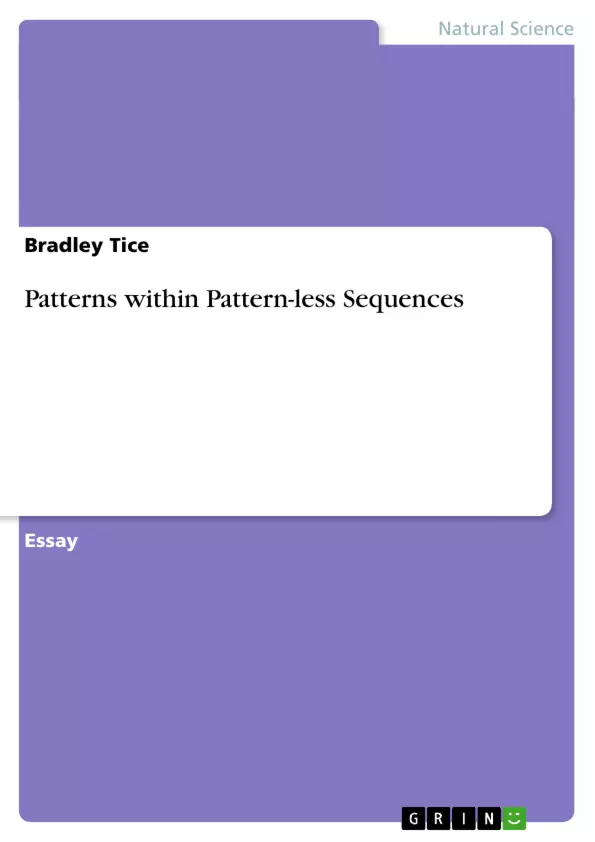While Kolmogorov Complexity defines a measure of randomness as being pattern-less in a sequence of a binary string, such rubrics come into question when sub-groups are used as a measure of such patterns in a similar sequence of a binary string. This paper examines such sub-group patterns and finds questions raised about existing measures for a random binary string.
Inhaltsverzeichnis (Table of Contents)
- Patterns within Pattern-less Sequences
- Qualities of randomness and non-randomness
- Examining the classical notion of a random and non-random set of 1's and O's
- The author has done early work on coding each of the sub-groups and reducing them to a compressed state
- The very idea of the notion of a patterned or pattern-less quality
Zielsetzung und Themenschwerpunkte (Objectives and Key Themes)
This paper examines the concept of patterns within seemingly pattern-less sequences of binary strings, challenging the traditional understanding of randomness as defined by Kolmogorov complexity (Algorithmic Information Theory). The author explores sub-group patterns within binary strings and questions the established measures of randomness.
- Kolmogorov complexity and its limitations in detecting patterns within sub-groups
- The nature of randomness and its relationship to patterns
- Sub-group analysis as a potential alternative measure for randomness
- The application of compression and decompression techniques to binary strings
- The need for a more nuanced understanding of patterns and randomness in binary sequences
Zusammenfassung der Kapitel (Chapter Summaries)
- The introduction defines the problem of measuring randomness in binary strings and introduces the concept of Kolmogorov complexity as a standard measure.
- The paper then presents two examples of binary strings, one seemingly patterned and the other seemingly random, and analyzes the sub-group patterns within them.
- The author explores the potential for sub-group analysis as a measure of randomness, even in sequences considered random by Kolmogorov complexity.
- The paper discusses the limitations of existing measures of randomness and highlights the need for further research into the nature of patterns within binary strings.
Schlüsselwörter (Keywords)
This paper focuses on the concepts of randomness and non-randomness in binary strings, utilizing Kolmogorov complexity (Algorithmic Information Theory) and sub-group analysis as key frameworks. The author explores the relationship between patterns, sub-groups, and randomness, challenging traditional measures and advocating for a more nuanced understanding of these concepts. The study also touches on the potential applications of compression and decompression techniques in relation to binary strings.
- Arbeit zitieren
- Professor Bradley Tice (Autor:in), 2012, Patterns within Pattern-less Sequences, München, GRIN Verlag, https://www.hausarbeiten.de/document/195912


